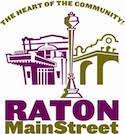by Bill Knowles WALSENBURG — Water is the one thing Walsenburg has in some abundance. Dave Johnston wants to use some of that excess capacity.
WALSENBURG — Water is the one thing Walsenburg has in some abundance. Dave Johnston wants to use some of that excess capacity.
In a water fat year, the City of Walsenburg finds it has an over abundance of water. The city has capacity in both water treatment and sewage treatment it isnʼt using. According to City Administrator Dave Johnston, this fact leads one to think about what can be done with the extra capacity.
“Right now we have about two and a half to three years worth of water in storage. We like to keep that much at all times,” said Johnston.
“The water plant is rated at six million gallons a day, and weʼre treating 500,000 gallons to 700,000 gallons a day most days.” Also, the sewage plant is operating at less then a third of what it was designed to do. Itʼs a two cell plant: one cell has never been used, and the one cell that is operating has yet to reach full capacity. In addition, “the Kohler Ditch is still closed and no water has been taken from it yet,” said Johnston.
This gives the city the ability to grow and possibly help out the other guy, in this case, La Veta.
Thereʼs a raw water line that flows water west of Walsenburg. According to a court order from the 1990s, it needs to be carrying treated water to about 27 water customers living west of the city. La Veta has the capacity to treat that water but canʼt deliver it because thereʼs not a treated water line coming down from La Veta.
The water lines that come down are aging. Some are about 100 years old. If the two municipalities worked together to replace the old water lines, leaving the existing ones in the ground, according to Johnston, then one of the lines could be used by La Veta to flow sewage down to Walsenburgʼs treatment plant. The other could be used to flow treated water to the 27 or so customers who need the water.
This could possibly present a cheaper alternative for La Veta than having to build a new sewage treatment plant. The Colorado Department of Health and Environment sent a letter to La Veta several years ago saying they needed to build a mechanical treatment plant by December 2018.
One possible roadblock might be the way state agencies generally relate to local enitties. By the time the city has what they consider to be a set of important projects, state agencies come in and rearrange the cityʼs projects list. The agencies have their own areas of oversight and generally will prioritize whatʼs important to the individual agency.
“Agencies such as the Water Quality Control Division come in and say ʻyou have to spend money to make this work,ʼ and the Department of Local Affairs comes in and provides funding as they can after the problem has been identified,” said Johnston. “But still it all depends on the project and which way the ʻwind is blowingʼ on whether a project is funded or not.”
With Walsenburg facing $200,000 in deficit spending for the year, water projects and other sales on water could raise revenues for the city across the board. Currently, Walsenburg residents are facing high rates on water and sewer usage. With increased sales of water, the city should be able to revisit the water rate issue in the future.

Walsenburg: Cool, Clear Water: part 2 of a series
More from NewsMore posts in News »
- El Raton Media Works Receives Grant to Expand Youth Coding League at RIS
- $2.42 Million Awarded to Village of Angel Fire for a Rental Housing Development
- Raton MainStreet Readies for 2025 Great American MainStreet Award Announcement
- Dawson Elk Valley Ranch Purchased by US Forest Service/Nature Conservancy for $66.7 Million




